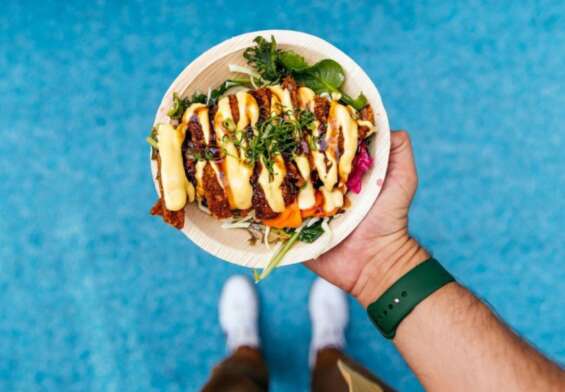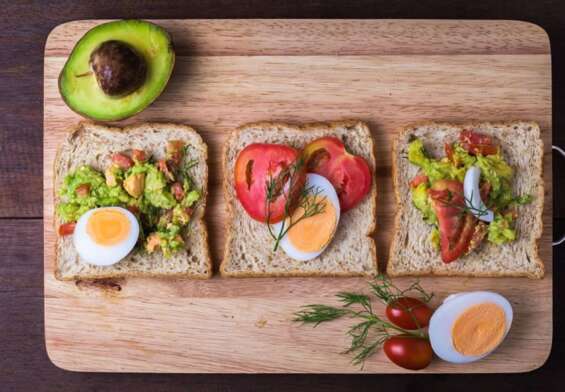
Monostrophic Diet: Can Eating One Food Lead to Weight Loss?
A monotrophic diet is a type of diet that involves eating only one type of food, either from one food group or from one type of food. This type of diet has been growing in popularity due to its potential health benefits and convenience. Proponents of a monotrophic diet argue that it can help you maintain a healthy weight, as well as providing a variety of other health benefits. Additionally, a monotrophic diet can be easier to follow than other types of diets, as there is no need to count calories or keep track of macronutrient ratios. Despite its potential health benefits, a monotrophic diet can also be quite restrictive and should be used with caution. It is important to ensure that the food you are eating is providing an adequate amount of essential nutrients and vitamins.
What Is a Monotrophic Diet?
A monotrophic diet is a diet that consists of eating only one type of food for an extended period of time. The idea behind this unique diet is that by eating a single type of food, you can reduce the number of calories you consume and, in turn, lose weight. However, it should be noted that this type of diet is not recommended by nutritionists and is not considered to be healthy or sustainable.
If you’re looking for a fun way to lose some weight, then the monotrophic diet might just be the answer. Just imagine, eating nothing but pizza for a month! Or perhaps a month of nothing but ice cream! While it might sound like a dream come true, the truth is that this type of diet can be quite unpleasant and can lead to nutrient deficiencies. So if you’re serious about losing weight, it’s best to stick with healthier options.
Benefits of Following a Monotrophic Diet
If you’re looking for a more extreme dieting experience, then the monotrophic diet might be just the thing for you! This diet consists of only one food item – that’s right, one food item. No more counting calories, no more worrying about portion sizes – just one type of food for every meal. Sound too good to be true? Well, here are some of the purported benefits of following a monotrophic diet:
Increased Focus: You’ll never have to worry about making a decision about what to eat because you’ll already know! This can help you to focus on the task at hand, instead of spending time agonizing over the menu.
Weight Loss: Studies show that eating fewer calories can result in weight loss, and the monotrophic diet fits the bill. By limiting yourself to one type of food, you’ll be reducing your calorie intake and thus, losing weight.
Money Savings: Eating the same type of food over and over again can be quite economical. This is especially true if you’re eating something like rice, beans, or potatoes – all of which are quite affordable.
Improved Health: Eating one type of food can help you to get the necessary nutrients you need without overloading your body with too many unhealthy ingredients.
So, if you’re looking for an extreme diet that can save you money and help you lose weight, the monotrophic diet might be the perfect solution. Just make sure you get some variety in your diet – even if it’s just one type of food, it’s still important to get a wide range of nutrients from the food you’re eating. Bon appetit!
How to Choose the Right Foods for a Monotrophic Diet
Are you ready to take your health to the next level and try out the monotrophic diet? Well, you’ve come to the right place! We’re here to help you pick the best foods for your monotrophic diet.
First, let’s get one thing straight: monotrophic diets are no joke! You’ll be eating the same food every day, so make sure it’s something you actually like. (It’s a lot easier to stick to a diet when it tastes good!)
Now that you’ve decided on a food you like, you’ll want to make sure it provides the right nutrition. Stick to foods that are high in protein, fiber, and healthy fats. If you’re not sure, you can always consult a nutritionist to make sure you’re eating the right balance of nutrients.
One of the great things about monotrophic diets is that you don’t have to worry about counting calories or measuring portions. Just make sure you’re getting enough to feel full and satisfied throughout the day.
Finally, don’t be afraid to mix things up and experiment. You can always add some spices, herbs, or seasonings to your food to make it more interesting. Just make sure you’re still eating the same basic food every day.
So there you have it! Now you know how to choose the right foods for a monotrophic diet. Good luck and happy eating!
What Health Conditions Can a Monotrophic Diet Help?
The monotrophic diet is gaining popularity among the health-conscious – and for good reason! It’s touted as a great way to boost energy levels, improve digestion, and even help with a variety of health conditions. But what health conditions can a monotrophic diet help with?
Well, if you’re looking for a natural way to manage your cholesterol, the monotrophic diet may be just the ticket. Studies have found that this eating plan can help reduce bad cholesterol levels while increasing good cholesterol levels.
If you’re dealing with indigestion or other digestive issues, the monotrophic diet can be a great solution. It’s designed to reduce inflammation and aid in digestion, which can help ease symptoms and prevent further digestive problems.
The monotrophic diet can even help with weight-loss. By focusing on healthy, single-ingredient foods, the monotrophic diet encourages mindful eating and helps you pay attention to portion sizes. Plus, since it eliminates processed and refined foods, you’re more likely to reach and maintain a healthy weight.
And last but not least, the monotrophic diet is great for boosting energy levels. By reducing the number of different foods you’re eating, your body has more time and energy to focus on digesting and assimilating the nutrients from the single food. This helps prevent fatigue and give you the energy you need to get through the day.
So there you have it – the monotrophic diet can help with a variety of health conditions, from cholesterol to weight-loss to energy levels. So why not give it a try and reap the benefits?
Tips for Sustaining a Monotrophic Diet
Stock up on healthy snacks: If you’re going to stick to a monotrophic diet, you’ll need to be prepared. Stock your pantry, fridge, and freezer with healthy snacks that you can reach for whenever you feel like you need a little something extra.
Have plenty of recipes and ideas: A monotrophic diet can get a little boring if you don’t have some variety in your meals. So, make sure you have plenty of recipes and ideas for ways to prepare your one food.
Get creative: Don’t be afraid to experiment with different flavors, spices, and cooking techniques to make your monotrophic diet more interesting and enjoyable.
Don’t forget your multivitamins: Even though you’re having a single food, it’s still important to make sure you’re getting all the vitamins and minerals your body needs. So, be sure to take a multivitamin supplement each day.
Make it fun: Let’s face it—eating the same food every day can get pretty dull. So, why not make it fun? Have some friends over for a monotrophic potluck, or challenge yourself to come up with creative ways to prepare your food.
Listen to your body: Eating the same food every day can be a challenge, and it’s important to know when it’s time to take a break. If you’re feeling tired, sluggish, or just plain over it, don’t be afraid to give yourself a break and enjoy some of your favorite foods.
How to Design a Healthy Monotrophic Diet Meal Plan
If you’re looking to cut out some of the hassle of meal planning and are looking for a diet that only requires one type of food, then monotrophic eating could be right for you! Monotrophic eating is when you eat only one type of food for an entire meal. While it may sound a bit boring, it can be a great way to simplify your diet and get some of the essential nutrients you need. Here’s how to design a healthy monotrophic meal plan:
Step 1: Pick Your Food
The first step in designing a monotrophic diet meal plan is to pick the food that you’ll be eating for every meal. The most popular choices for monotrophic diets are usually fruits, vegetables, nuts, and grains. Pick one that you enjoy eating and that you can easily prepare.
Step 2: Determine Your Portions
Once you’ve chosen your food, you need to decide how much you’re going to eat at each meal. This will depend on your individual calorie needs and goals. Be sure to include enough food to provide the nutrition your body needs.
Step 3: Get Creative
Just because you’re eating the same food doesn’t mean you have to eat the same thing every day. Get creative with how you prepare your food and the recipes you use. For example, if you’re eating fruit, you can make smoothies, salads, and even desserts with it.
Step 4: Watch Your Nutrient Intake
When eating one type of food, it’s important to make sure you’re getting the nutrients your body needs. Be sure to include a variety of vitamins and minerals in your diet. If you’re unsure about what nutrients you need, talk to your doctor or a dietitian.
Step 5: Enjoy!
Eating monotrophically doesn’t have to be boring or restrictive. Once you’ve designed your meal plan, enjoy the simplicity of it and the delicious meals you can create with your food. Have fun with it and make sure you’re getting the nutrition you need!
Monotrophic eating can be a great way to simplify your diet and get the essential nutrients you need. With a little creativity and planning, you can easily design a healthy monotrophic meal plan that works for you. Bon appétit!
What to Expect When You Start a Monotrophic Diet
Starting a monotrophic diet can be an exciting adventure, but it can also be a bit intimidating. After all, you’re limiting yourself to one type of food – and that can be scary! But don’t worry, you got this! Here’s what to expect when you embark on your monotrophic diet journey.
You’ll Feel Hungry All the Time: The most obvious thing you’ll experience when you start a monotrophic diet is a lot of hunger. Since you’re only eating one type of food, you won’t be getting the variety of nutrients your body needs to stay full, so you’ll likely be hungry more often than usual. Don’t worry – it’s totally normal.
You’ll Get Bored Easily: Eating the same food every day can get boring quickly. That’s why it’s important to find creative ways to spice up your meals. Try adding different herbs, spices, and sauces to your meals to make them more interesting.
You’ll Start Craving Variety: After a while, you’ll inevitably start to crave variety. It’s normal to want to try new foods and flavors, so don’t be afraid to do so in moderation. Just make sure you stick to the same type of food so you don’t disrupt your diet.
You’ll Have More Energy: Limiting yourself to one type of food means you’re getting more of the vitamins and minerals your body needs to function properly. This can result in feeling more energized throughout the day.
You’ll Lose Weight: If you stick to a monotrophic diet, you’ll likely lose weight. This is because your body is getting fewer calories than it needs, which forces it to use stored fat for energy. Just make sure to eat enough of the right type of food so you don’t become malnourished.
Overall, starting a monotrophic diet is an exciting and rewarding experience. Just remember to be patient and stay consistent, and you’ll be seeing results in no time!
How to Make Monotrophic Diet Friendly Recipes
Are you looking to make your monotrophic diet more interesting? If so, you’ve come to the right place! Here are some creative and delicious recipes that will make your monotrophic diet even more enjoyable.
‘One Ingredient’ Pizza: You don’t have to miss out on pizza just because it’s monotrophic! All you need is your favorite single ingredient, such as apples, bananas, or even potatoes. Spread it on a pizza pan, top with your favorite sauce, cheese and herbs, and bake it in the oven. You’ll have a delicious pizza in no time!
Monotrophic Mac and Cheese: Who doesn’t love mac and cheese? Take your favorite single ingredient (such as sweet potatoes or cauliflower) and cook it in boiling water until it’s soft. Mash it up and mix it with a little butter and some cheese. Top with your favorite herbs, and you’ve got a delicious monotrophic mac and cheese.
Single Ingredient Smoothie Bowl: Smoothie bowls are a great way to enjoy your favorite single ingredient. Start with a base of frozen bananas, add in your favorite single ingredient (such as blueberries or strawberries), some nut butter, and some non-dairy milk. Blend it all up and top with your favorite fruits, nuts, and seeds.
Monotrophic Wraps: If you’re looking for something a little more substantial, try making monotrophic wraps! Start by picking your favorite single ingredient (such as carrots or zucchini). Grate it up and mix it with some spices and herbs. Spread it onto a wrap and top with your favorite veggies and sauces. Wrap it up and enjoy!
Making monotrophic recipes doesn’t have to be boring! With a little creativity, you can create delicious and nutritious meals that will keep you satisfied. So, get cooking and enjoy your monotrophic diet!
Popular Fruits and Vegetables to Include in a Monotrophic Diet
If you’re looking to take the plunge into the world of monotrophic dieting, you’re in luck! You’ll never have to worry about making complicated recipes or having to choose between broccoli and carrots ever again. All you need is one type of fruit or vegetable and you’re on your way to a healthier lifestyle. Here are some of the most popular and tasty fruits and vegetables to include in your monotrophic diet:
Apples – Always a fan favorite, apples can be eaten raw or cooked in a variety of ways. Whether you’re having an apple a day or munching on a delicious apple pie, you can’t go wrong with a good old-fashioned apple.
Bananas – If you’re looking for a sweet snack, bananas are a great option. They’re full of vitamins and minerals, and they’re also a great source of energy. Plus, they’re delicious!
Carrots – Carrots are crunchy, nutritious, and versatile. You can eat them raw, roasted, or boiled. Plus, they’re a great source of fiber.
Potatoes – Potatoes are a great source of complex carbohydrates and fiber. Plus, they can be cooked in a variety of ways, making them a great addition to your monotrophic diet.
Spinach – Spinach is a powerhouse of nutrition and can be eaten raw or cooked. It’s high in vitamins A, C, and K and also contains iron, magnesium, and calcium.
So there you have it! Whether you’re looking for a sweet snack or a nutrient-packed meal, these popular fruits and vegetables are sure to keep you satiated and healthy on your monotrophic diet.
How to Avoid Boredom While on a Monotrophic Diet
If you’re on a monotrophic diet and feeling a bit bored with your food choices, don’t worry! Here are some creative ways to make your meals a bit more exciting.
- Bring the heat: Spice up your meals with some hot sauce, chili flakes, or other flavorful spices.
- Get creative with condiments: Try different dressings, sauces, and marinades to give your meals a flavor boost.
- Change up your cooking methods: Grill, bake, steam, or sauté your food instead of always boiling it.
- Get fruity: Add some diced fruit or berries to your meals for a burst of sweetness and color.
- Get nutty: Sprinkle crushed nuts, nut butter, or nut-based oils over your meal for some crunch.
- Dip it: Try dipping your food in various dips like hummus, tzatziki, or pesto.
- Play with textures: Try adding crunchy vegetables, croutons, or crispy noodles to your meals.
- Make it a smoothie: Blend your food with some fruit, yogurt, and other ingredients to make a delicious smoothie.
- Get creative with garnishes: Top your meals with herbs, edible flowers, seeds, or chopped veggies.
- Have fun with food: Get creative and make food art, or use cookie cutters to make fun shapes out of your food.
- With a little creativity, you can make your monotrophic diet a lot more delicious and enjoyable!
The Best Resources for Learning More About the Monotrophic Diet
The Monotrophic Manifesto: A Guide to Eating Like a Single-Food Superhero: An amusing and informative guide to the basics of the monotrophic diet. It includes tips for success, recipes, and answers to common questions about the diet.
Monotrophic Meal Planning for the Busy Professional: This humorous guide offers practical advice on how to make the monotrophic diet a reality for those with a busy lifestyle. It includes meal plans, shopping lists, and tips for eating monotrophically while on the go.
Monotrophic Recipes: 50 Mouthwatering Meals to Try: A cookbook featuring 50 delicious recipes specifically designed for the monotrophic diet. With recipes like black bean burgers, roasted cauliflower mac and cheese, and baked oatmeal bars, this book will help you make the most of your monotrophic meals.
Monotrophic Diet: The Ultimate Guide: An in-depth look at the monotrophic diet, including the benefits, risks, and how to get started. This guide also features meal plans and recipes tailored to the monotrophic diet.
Monotrophic Diet Q&A: Answers to Your Most Common Questions: A humorous but informative look at the monotrophic diet. This guide answers common questions about the monotrophic diet, from what it is to how to start.
Conclusion
The Monotrophic Diet can be an effective way to lose weight, as it allows you to consume a single type of food while still receiving all the essential nutrients your body needs. It also helps to control hunger and cravings, making it easier to stick to the diet in the long run. However, as with any diet, it is important to make sure that it is balanced and that you are getting all the essential vitamins and minerals your body needs in order to stay healthy. Additionally, it is important to monitor your health and progress, as some people may be more prone to deficiencies when following a monotrophic diet.











